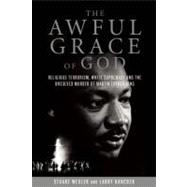
| Foreword | p. 5 |
| Introduction | p. 9 |
| The Conspirators | |
| Targeting Martin Luther King Jr. | p. 17 |
| Holy Cause and Devilish Disciples | p. 39 |
| Propaganda of the Deed | p. 61 |
| Inner Circles | p. 73 |
| Outer Rage | p. 89 |
| The Klan and "The Man" | p. 101 |
| Outside Options and Contract Killers | p. 125 |
| The Accused | |
| "I Wasn't in It by Myself" | p. 145 |
| Ray on the Run | p. 163 |
| RayÆs Long and Winding Road | p. 175 |
| Ray Explores His Options | p. 191 |
| Ray Recruited | p. 201 |
| The Crime | |
| Murder in Memphis | p. 221 |
| Aftermath: Missed Evidence and Closing Arguments | p. 251 |
| Open Questions | p. 282 |
| Being Contrary | p. 304 |
| Photographs, Key People and Groups, and Timeline | p. 343 |
| Notes | p. 371 |
| Index | p. 427 |
| Table of Contents provided by Ingram. All Rights Reserved. |
The New copy of this book will include any supplemental materials advertised. Please check the title of the book to determine if it should include any access cards, study guides, lab manuals, CDs, etc.
The Used, Rental and eBook copies of this book are not guaranteed to include any supplemental materials. Typically, only the book itself is included. This is true even if the title states it includes any access cards, study guides, lab manuals, CDs, etc.